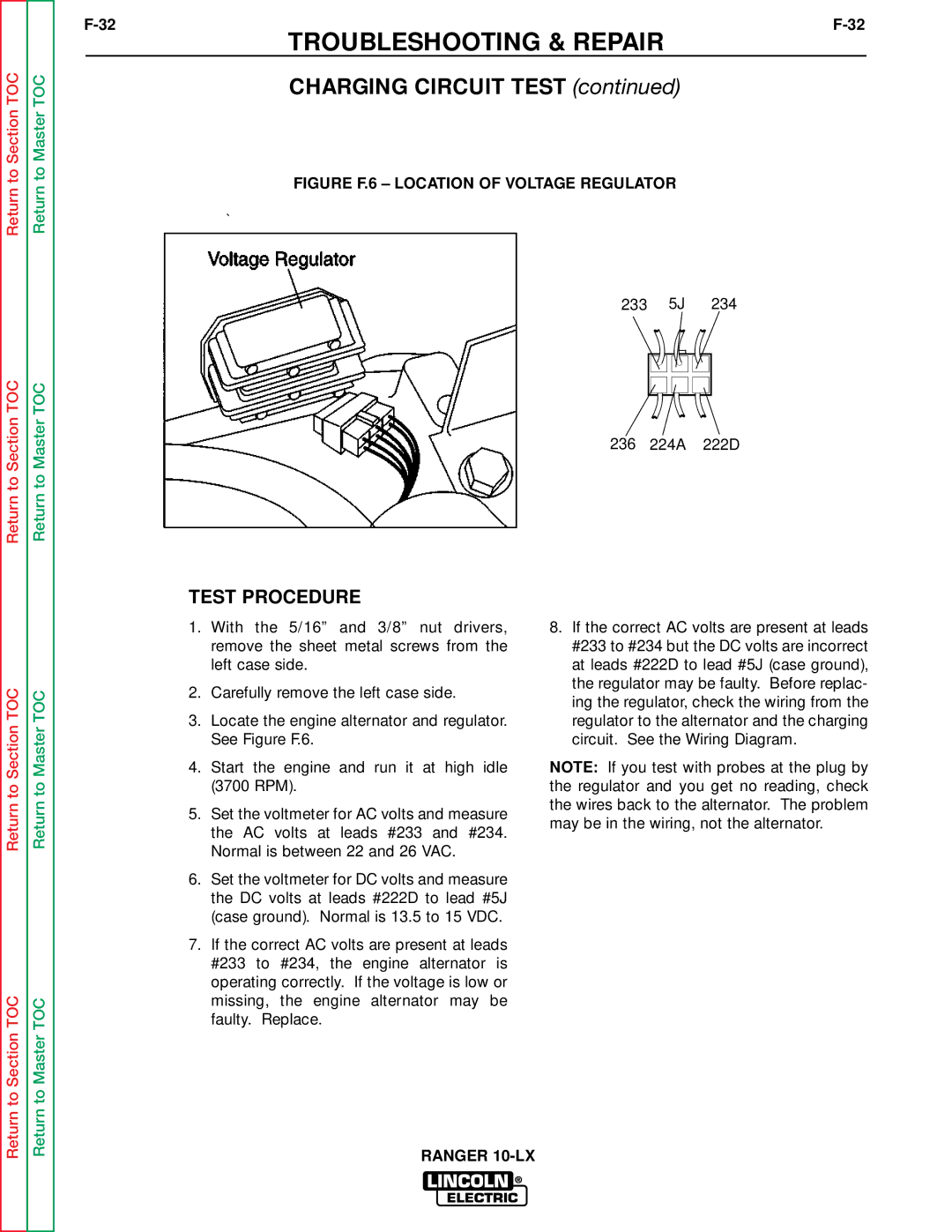
Return to Section TOC
Return to Section TOC
Return to Master TOC
Return to Master TOC
TROUBLESHOOTING & REPAIR
CHARGING CIRCUIT TEST (continued)
FIGURE F.6 – LOCATION OF VOLTAGE REGULATOR
233 5J 234
236 224A 222D
Return to Section TOC
Return to Section TOC
Return to Master TOC
Return to Master TOC
TEST PROCEDURE
1.With the 5/16” and 3/8” nut drivers, remove the sheet metal screws from the left case side.
2.Carefully remove the left case side.
3.Locate the engine alternator and regulator. See Figure F.6.
4.Start the engine and run it at high idle (3700 RPM).
5.Set the voltmeter for AC volts and measure the AC volts at leads #233 and #234. Normal is between 22 and 26 VAC.
6.Set the voltmeter for DC volts and measure the DC volts at leads #222D to lead #5J (case ground). Normal is 13.5 to 15 VDC.
7.If the correct AC volts are present at leads #233 to #234, the engine alternator is operating correctly. If the voltage is low or missing, the engine alternator may be faulty. Replace.
8.If the correct AC volts are present at leads #233 to #234 but the DC volts are incorrect at leads #222D to lead #5J (case ground), the regulator may be faulty. Before replac- ing the regulator, check the wiring from the regulator to the alternator and the charging circuit. See the Wiring Diagram.
NOTE: If you test with probes at the plug by the regulator and you get no reading, check the wires back to the alternator. The problem may be in the wiring, not the alternator.
RANGER
